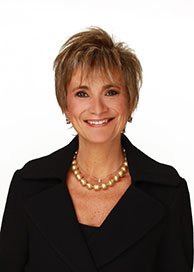|
|
|||
|
|||
|
|||
|
|
||
|
Weed out 'Bottom 20s' on Senior TeamWhen you look at the composition of your leadership team, evaluating attitudes is just as important as assessing skills. While your workforce as a whole typically falls into three groups: the top 20%, middle 60% and bottom 20%, your senior leadership team literally can’t afford to include people who are not “Top 20s.” Top 20s are self-motivated and inner-directed. They want to make money, but they don’t work for money; their passion is about getting results. They are proactive, collaborative leaders who understand that the way to win is to beat the competition, not each other. They are willing to do what’s in the best interest of the organization even if it is not in their own self-interest. I have learned through experience that what distinguishes these C-suite players is their ability to lead and mobilize people. One of the best leaders I have worked with is the CIO of a major corporation, although he does not have a technology background. However, he does have the ability to utilize the strengths of his team to achieve extraordinary results. At the other end of the spectrum, Bottom 20s exude negativism, slow down decision-making and thwart open discussion. They zap energy and dampen the enthusiasm of others, including their direct reports and others in their department. They often bring up the past and go off on unproductive tangents. Bottom 20s tend to react emotionally rather than logically to points of view different from their own, thus smothering what might be the next big idea before it gets a fair shot. That means lost opportunity and money left on the table. Bottom 20s in the C-suite have a toxic effect on the entire organization, since behaviors that originate there filter down through the organization, where they are repeated and magnified. When you allow Bottom 20s on the senior team, it sends a message that people can whine, complain and treat others however they want, as long as they get results. Eventually, the company learns that the results are not sustainable, and that they have been achieved at a cost that includes damage to morale, loss of talent and the high price of rebuilding. While both Top 20s and Bottom 20s challenge the CEO, they have different motives. Top 20s want to make a decision and move forward. Bottom 20s want to maintain the status quo or go back to the way things used to be. If you’re wondering how Bottom 20 individuals made their way to the C-suite in the first place, it’s often because they achieved results and got promoted. While they might once have been forward thinking, they changed through the years, and now are doing more harm than good. It’s not unreasonable for CEOs to have behavioral expectations for their team, as well as financial and results-oriented expectations. In his book “Eleven Rings: The Soul of Success,” Phil Jackson, long-time NBA coach, recounted telling Michael Jordan that the team would only win championship rings if Jordan helped others on the team perform their best. Although the best companies have only Top 20s on the senior leadership team, sometimes there are none available to perform a necessary function. In that case, a couple Middle 60s won’t hurt performance. Although Middle 60s are reluctant to offer their opinions and avoid taking risks, they also are loyal, work hard, and can get good results. When there is a critical mass of Top 20s on the team, Middle 60s are likely to emulate them. The bottom line is that Bottom 20s destroy the environment that drives success, and they don’t belong in the C-suite. |
||
|
|
||
|
|||








